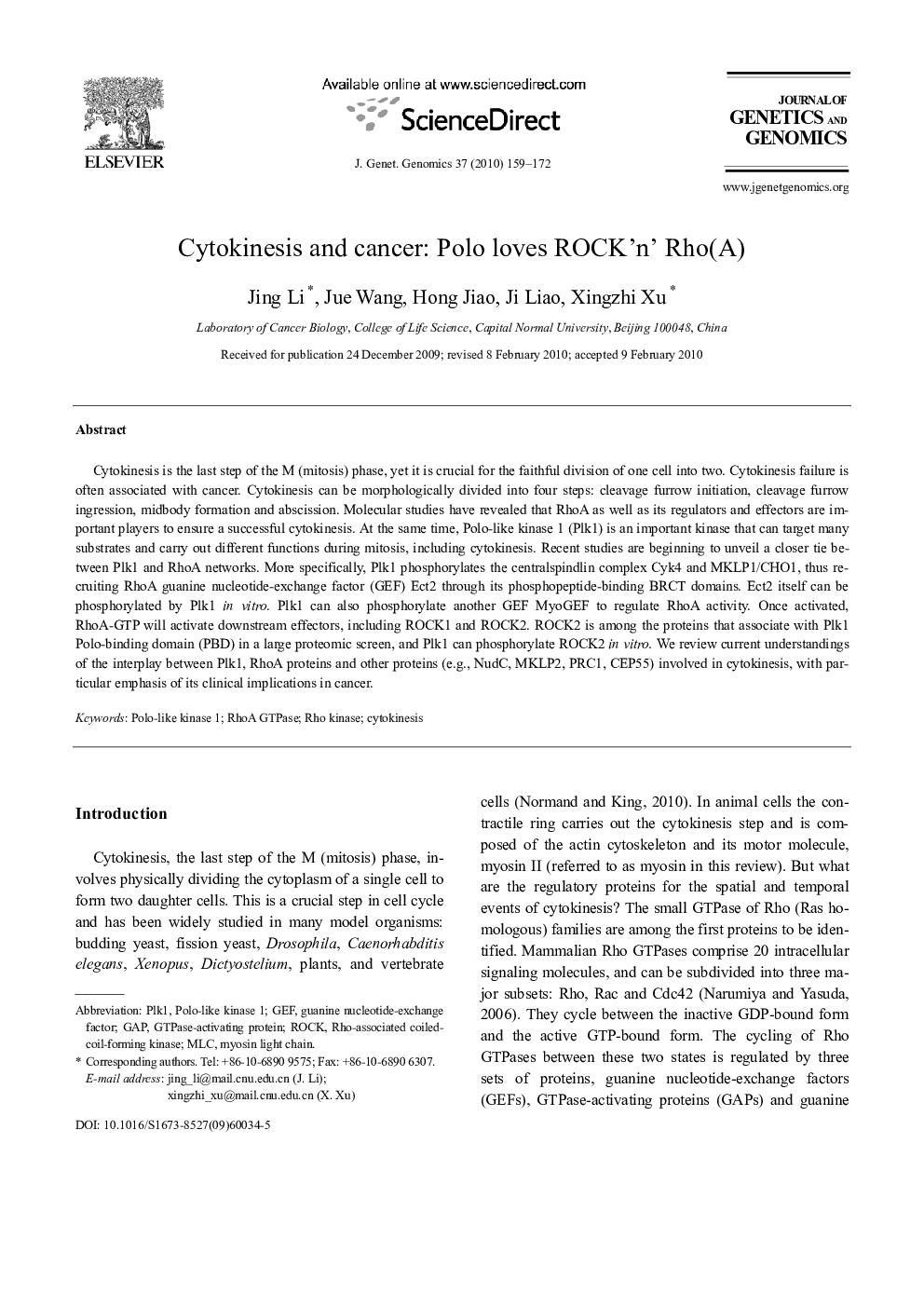| Article ID | Journal | Published Year | Pages | File Type |
|---|---|---|---|---|
| 2787953 | Journal of Genetics and Genomics | 2010 | 14 Pages |
Cytokinesis is the last step of the M (mitosis) phase, yet it is crucial for the faithful division of one cell into two. Cytokinesis failure is often associated with cancer. Cytokinesis can be morphologically divided into four steps: cleavage furrow initiation, cleavage furrow ingression, midbody formation and abscission. Molecular studies have revealed that RhoA as well as its regulators and effectors are important players to ensure a successful cytokinesis. At the same time, Polo-like kinase 1 (Plk1) is an important kinase that can target many substrates and carry out different functions during mitosis, including cytokinesis. Recent studies are beginning to unveil a closer tie between Plk1 and RhoA networks. More specifically, Plk1 phosphorylates the centralspindlin complex Cyk4 and MKLP1/CHO1, thus recruiting RhoA guanine nucleotide-exchange factor (GEF) Ect2 through its phosphopeptide-binding BRCT domains. Ect2 itself can be phosphorylated by Plk1 in vitro. Plk1 can also phosphorylate another GEF MyoGEF to regulate RhoA activity. Once activated, RhoA-GTP will activate downstream effectors, including ROCK1 and ROCK2. ROCK2 is among the proteins that associate with Plk1 Polo-binding domain (PBD) in a large proteomic screen, and Plk1 can phosphorylate ROCK2 in vitro. We review current understandings of the interplay between Plk1, RhoA proteins and other proteins (e.g., NudC, MKLP2, PRC1, CEP55) involved in cytokinesis, with particular emphasis of its clinical implications in cancer.
